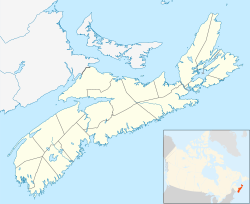Chapman Settlement in Nova Scotia
Chapman Settlement is a community in the Canadian province of Nova Scotia, located in Cumberland County.
Chapman House National Historic Site of Canada Chapman Road, Cumberland, Subdistrict C, Nova Scotia, B4H, Canada Formally Recognized: 1968/11/28 [1]
